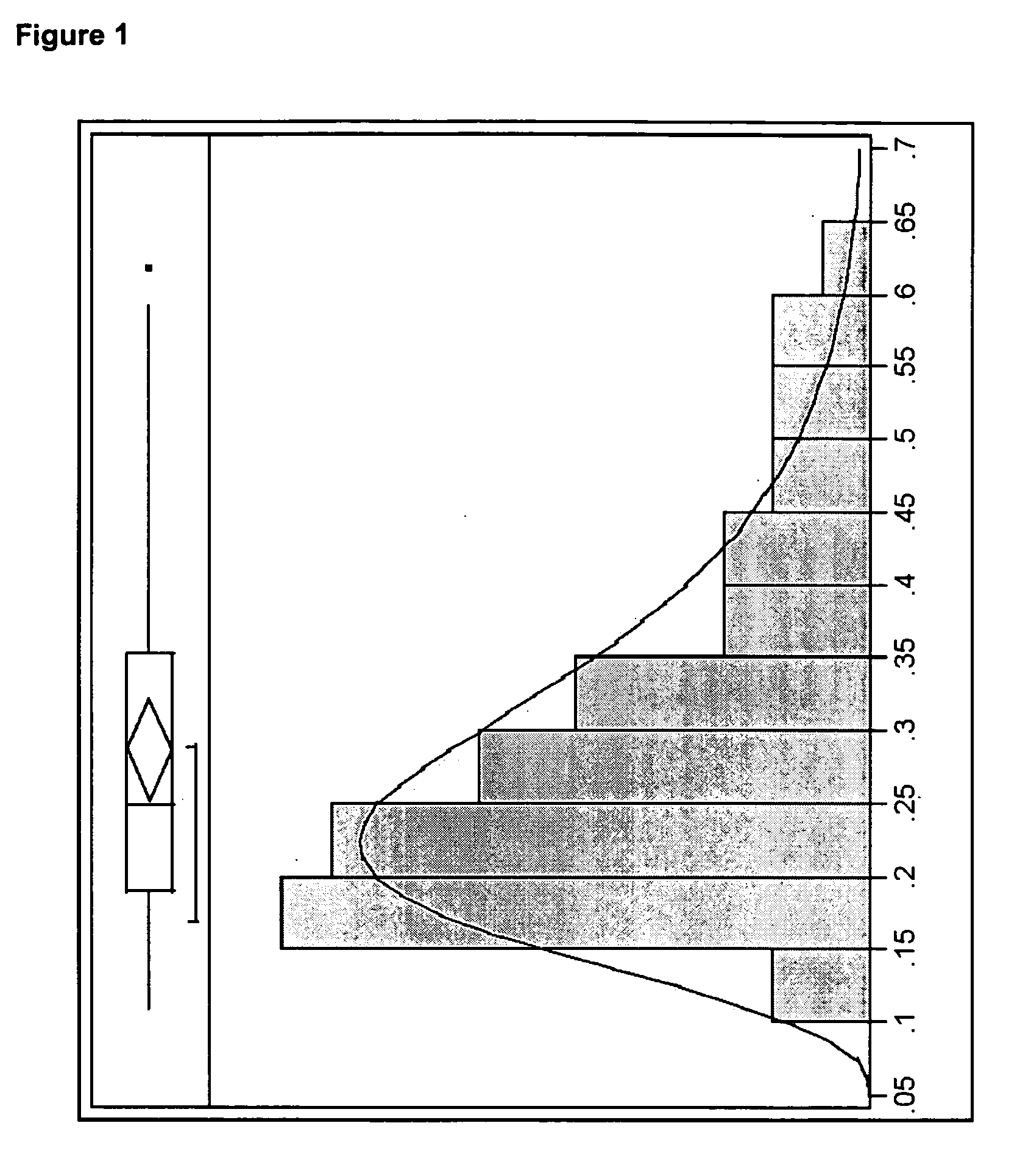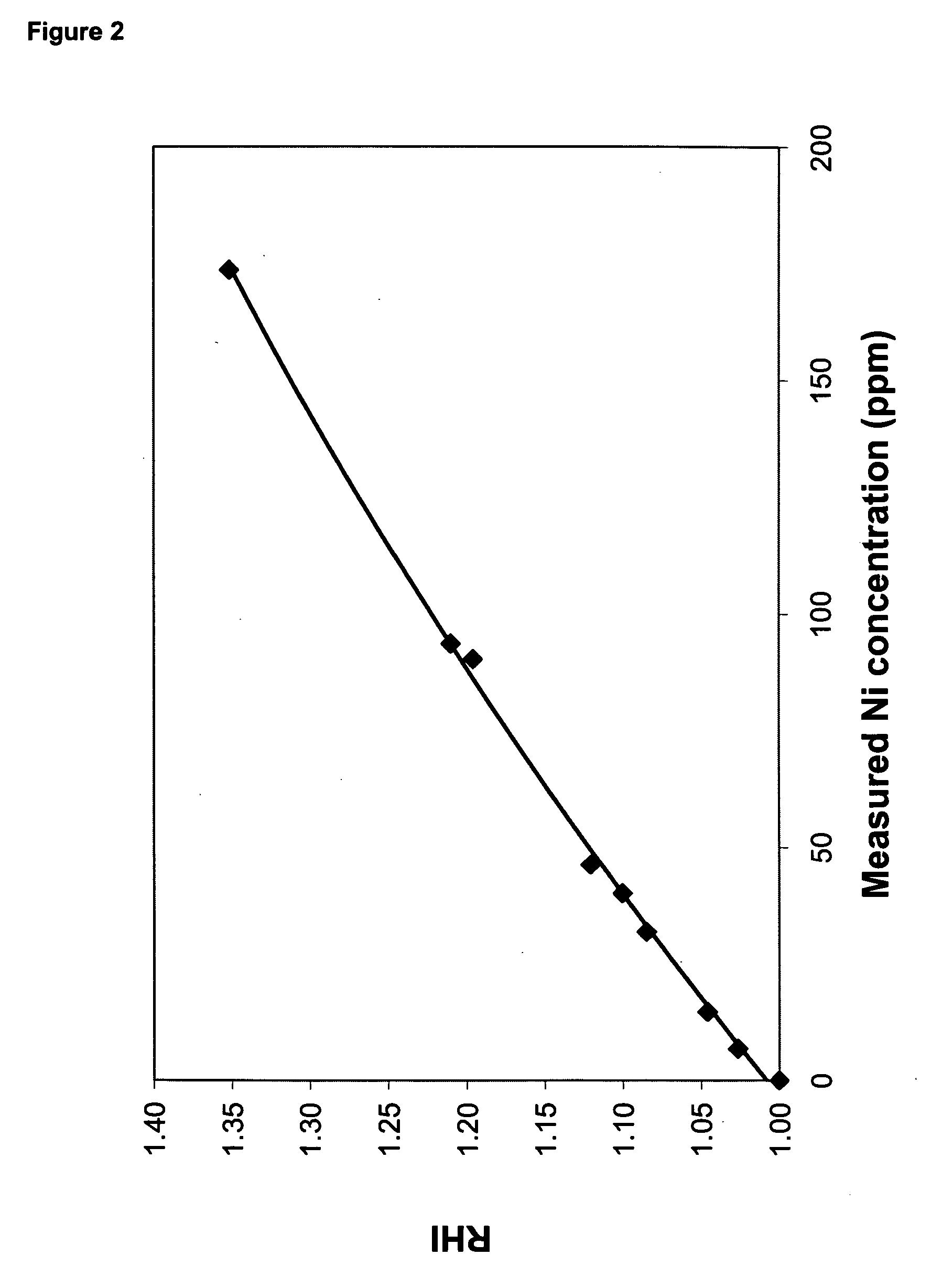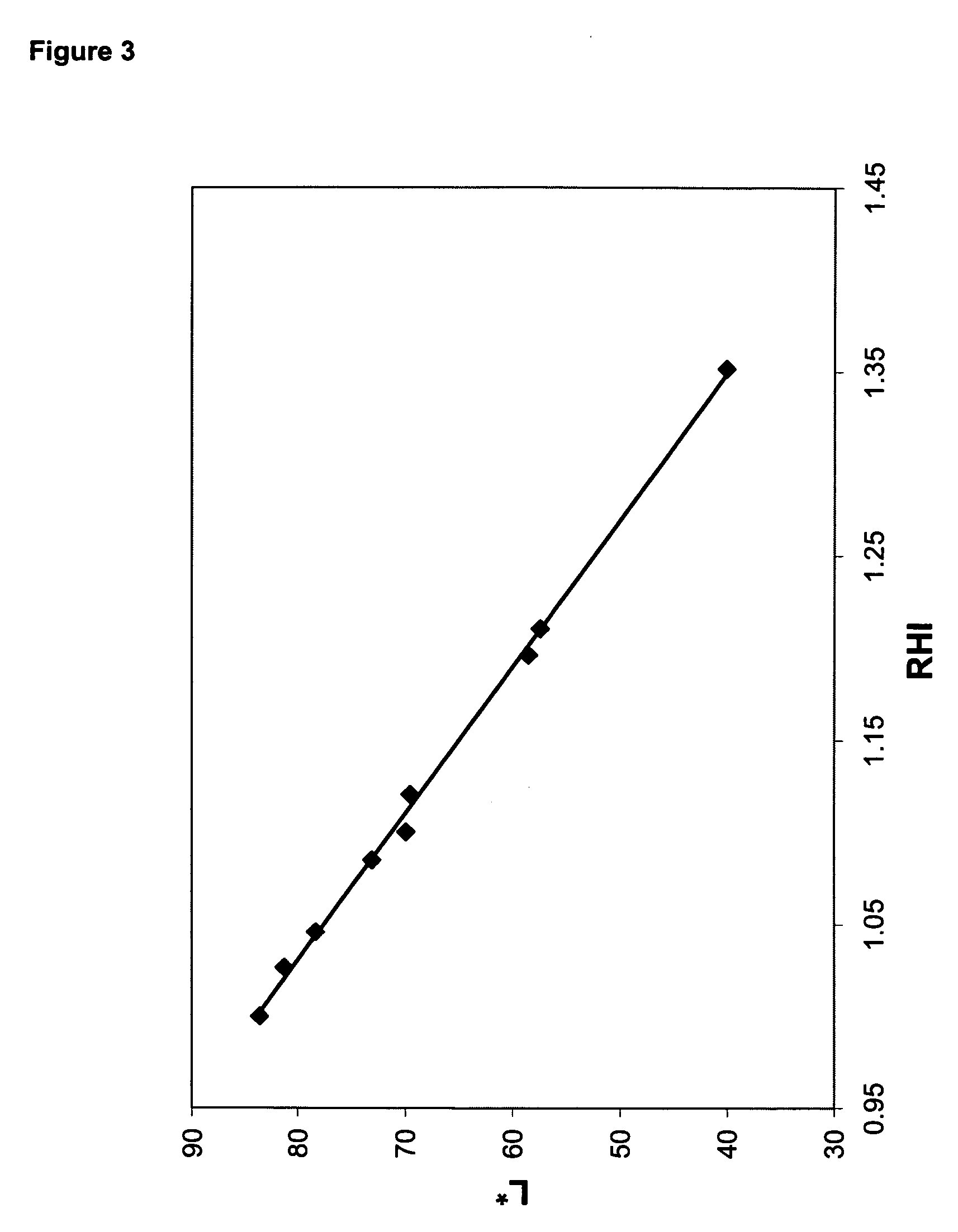Polyester polymer and copolymer compositions containing metallic nickel particles
a technology of metallic nickel particles and polymer polymers, applied in the field of polymer compositions, can solve the problems of poor reheat efficiency of polymer, especially pet, in the region, and material having a negative effect on the visual appearance of pet containers, and achieve the effect of improving reheat efficiency
- Summary
- Abstract
- Description
- Claims
- Application Information
AI Technical Summary
Benefits of technology
Problems solved by technology
Method used
Image
Examples
example 1
[0144] In this example, high crystalline metallic nickel particles were purchased from Alfa Aesar (Stock number 43338) as spherical particles having a stated particle size of 0.08 μm to 0.15 μm. The sample also had a stated purity of 99.8%, a specific area of 4.5 m2 / g to 8.5 m2 / g, and a tap density of 1.0 g / cm3 to 2.5 g / cm3. The particles were found to have a d50 of 0.25 μm, with a d50 value ranging from about 0.1 μm to about 0.7 μm, as measured by scanning electron microscopy.
[0145] The metallic nickel particles were added during melt compounding to a commercial PET resin, VORIDIAN™ 9921 Polymer (a copolymer PET that has been crystallized and has an I.V. of 0.8, available from Eastman Chemical Company, Kingsport, Tenn.). A concentrate containing 464 ppm nickel was prepared using VORIDIAN 9921 Polymer as the base resin. The extrusions were performed using a one-inch single-screw extruder with Saxton and Pineapple mixing head. The extruder was also equipped with pelletization capabi...
example 2
[0156] Nickel particles as described in Example 1 were added to a PET polymerization process in order to determine their effect on reheat rate and color. Polymers were prepared in the following manner.
[0157] In the first step, a PET oligomer was prepared by charging purified terephthalic acid (PTA), purified isophthalic acid (PIA), ethylene glycol (EG), and antimony trioxide (ATO) catalyst to a 2-L autoclave. The formulation was as follows: 651.0 g PTA, 13.0 g PIA, 396.0 g EG and 0.249 g ATO. The raw materials were reacted at 245° C. and 40 psig for 200 minutes. At the end of the reaction, the resulting oligomer was discharged from the reactor and allowed to solidify at room temperature and was then pulverized to a coarse powder.
[0158] In the second step, a polymer was prepared from the oligomer in the following manner. Oligomer (121 g) was charged to a 500 mL polymerization flask equipped with a polymer head, an overhead stirrer, a nitrogen inlet, a dry-ice condensing trap, and a...
example 3
[0167] This example illustrates the improvement in oxidative stability provided by metallic nickel reheat particles compared to antimony reheat particles. A polymer was prepared, in the manner described above, with a charge of 75 ppm nickel, and a polymer containing 1,000 ppm antimony was prepared as a comparative example. Both polymer samples were subjected to solid-state polymerization using both pure nitrogen and nitrogen containing 10% air as the solid-stating gas. Solid-state polymerization conditions were the following: 45 g charge of polymer to solid-state polymerization unit; 4.0 SCFH nitrogen flow rate; 216° C. temperature; and 4.0 hr reaction time. After the solid-state reaction was completed, the samples were molded into discs, and RHI was measured as described above.
[0168] Table 5 contains the reheat results on the nickel and antimony-containing polymers that were solid-stated in nitrogen atmosphere, and nitrogen containing 10% air. Whereas RHI dropped from 1.39 to 1.18...
PUM
| Property | Measurement | Unit |
|---|---|---|
| median particle size | aaaaa | aaaaa |
| particle size | aaaaa | aaaaa |
| median particle size | aaaaa | aaaaa |
Abstract
Description
Claims
Application Information
 Login to View More
Login to View More - R&D
- Intellectual Property
- Life Sciences
- Materials
- Tech Scout
- Unparalleled Data Quality
- Higher Quality Content
- 60% Fewer Hallucinations
Browse by: Latest US Patents, China's latest patents, Technical Efficacy Thesaurus, Application Domain, Technology Topic, Popular Technical Reports.
© 2025 PatSnap. All rights reserved.Legal|Privacy policy|Modern Slavery Act Transparency Statement|Sitemap|About US| Contact US: help@patsnap.com



